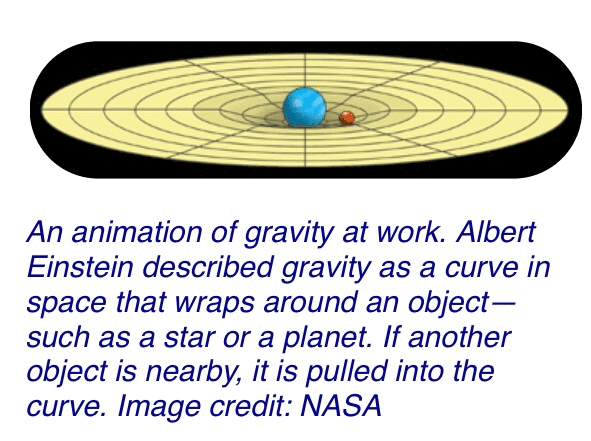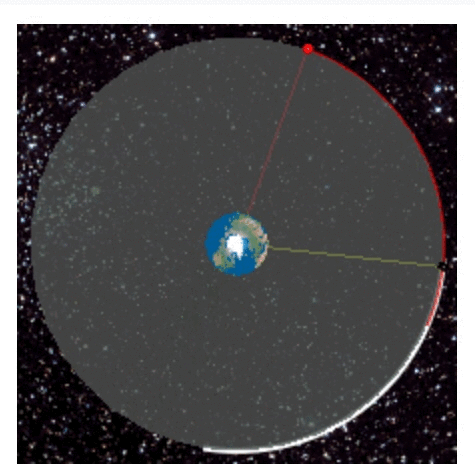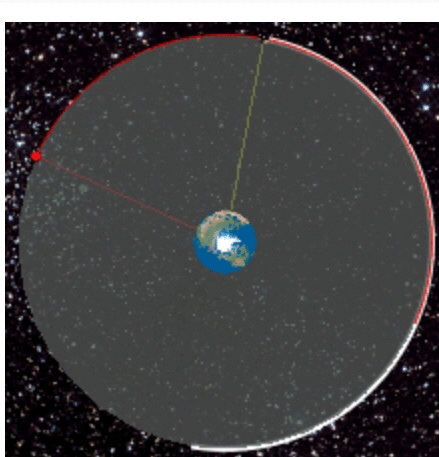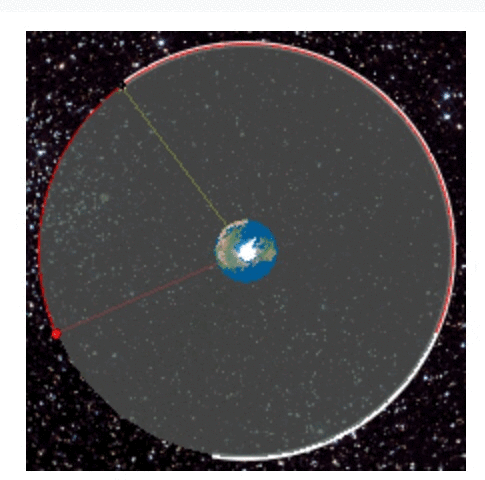It looks like you're using an Ad Blocker.
Please white-list or disable AboveTopSecret.com in your ad-blocking tool.
Thank you.
Some features of ATS will be disabled while you continue to use an ad-blocker.
share:
originally posted by: InfiniteTrinity
a reply to: oldcarpy
You disagree with me agreeing with the numbers?
So according to you the numbers are wrong?
Waiting for your detailed debunk.
Fond of putting words into other poster's mouths, aren't we?
originally posted by: InfiniteTrinity
a reply to: sapien82
Yes because both geostationary satellites and elliptical satellites orbit the earth
No geostationary satellites dont move relative to Earth, so no, they dont orbit Earth. It seemed you finally had a moment of clarity, but nope. No no.
Hey can get in on the fun,
I love playing and acting like a 8 year old.
Ok, Here it is
Yes, geostationary satellites do move around earth, so yes, they do orbit earth.
Yes yes yes yes
They do, they do, they do. Yes Yes Yes.
Thanks for letting me play your game, it was fun.
Its obvious they do because I said yes more times than you said no
so
Oh and my dad is better than yours
so
a reply to: InhaleExhale
Oh yeah? Well my dad is bigger than yours.
Oh and my dad is better than yours
Oh yeah? Well my dad is bigger than yours.
originally posted by: InfiniteTrinity
a reply to: sapien82
Yes because both geostationary satellites and elliptical satellites orbit the earth
No geostationary satellites dont move relative to Earth, so no, they dont orbit Earth. It seemed you finally had a moment of clarity, but nope. No no.
You are completely wrong.
originally posted by: oldcarpy
a reply to: InhaleExhale
Oh and my dad is better than yours
Oh yeah? Well my dad is bigger than yours.
Runs of crying
I'm telling my mom on you
a reply to: InhaleExhale
Sure you'll fit right in.
No a geostationary satellite does not move around the Earth. I stays above the same point on Earth. It cant do that and move around the Earth at the same time.
Rofl.
Hey can get in on the fun,
Sure you'll fit right in.
Yes, geostationary satellites do move around earth, so yes, they do orbit earth.
No a geostationary satellite does not move around the Earth. I stays above the same point on Earth. It cant do that and move around the Earth at the same time.
Rofl.
a reply to: ManFromEurope
Geostationary satellites DO move around the Earth then?
You are completely wrong.
Geostationary satellites DO move around the Earth then?
a reply to: InfiniteTrinity
yes a geostationary satellite does move around earth
I agree, but I think its above not on so.... lets be friends
Are you suggesting the earth doesn't rotate/spin?
No a geostationary satellite does not move around the Earth.
yes a geostationary satellite does move around earth
I stays above the same point on Earth.
I agree, but I think its above not on so.... lets be friends
It cant do that and move around the Earth at the same time.
Are you suggesting the earth doesn't rotate/spin?
edit on 20-8-2019 by InhaleExhale because: (no reason given)
originally posted by: InfiniteTrinity
a reply to: ManFromEurope
You are completely wrong.
Geostationary satellites DO move around the Earth then?
No, they fell out of the sky because Newton got it all wrong. Poster on internet says so so must be true.
a reply to: InhaleExhale
You do. Then how is it moving around the Earth? If it moved around the Earth it wouldnt stay above the same spot now would it. You people are unbelievable. A child can understand this.
No why do you ask?
I agree,
You do. Then how is it moving around the Earth? If it moved around the Earth it wouldnt stay above the same spot now would it. You people are unbelievable. A child can understand this.
Are you suggesting the earth doesn't rotate/spin?
No why do you ask?
a reply to: InhaleExhale
How can it? It's flat. Did you not get the memo?
Are you suggesting the earth doesn't rotate/spin?
How can it? It's flat. Did you not get the memo?
a reply to: InfiniteTrinity
Well, yes. But the question is, why can't you?
A child can understand this.
Well, yes. But the question is, why can't you?
a reply to: InfiniteTrinity
Like I've asked you multiple times now , provide evidence which supports your claim , we already have evidence of geostationary / geo synchronous satellites and elliptical satellites
now provide evidence that contradicts this and proves your position that geostationary satellites dont orbit the earth
, go for it , I bet you 100 pounds sterling you wont find any evidence to the contrary
Like I've asked you multiple times now , provide evidence which supports your claim , we already have evidence of geostationary / geo synchronous satellites and elliptical satellites
now provide evidence that contradicts this and proves your position that geostationary satellites dont orbit the earth
, go for it , I bet you 100 pounds sterling you wont find any evidence to the contrary
a reply to: neutronflux
Your definition,
Basically the same as NASA's. It was easier to link than just qoute it?
So does a geostationary satellites go around Earth? No? Then they dont orbit.
Thanks for your support.
Your definition,
In physics, an orbit is the gravitationally curved trajectory of an object,[1] such as the trajectory of a planet around a star or a natural satellite around a planet.
Basically the same as NASA's. It was easier to link than just qoute it?
So does a geostationary satellites go around Earth? No? Then they dont orbit.
Thanks for your support.
a reply to: InfiniteTrinity
If the earth rotates then it would wouldn't it?
So again
are you suggesting the earth doesn't rotate?
NO reason, just asking
If it moved around the Earth it wouldnt stay above the same spot now would it.
If the earth rotates then it would wouldn't it?
So again
are you suggesting the earth doesn't rotate?
No why do you ask?
NO reason, just asking
originally posted by: InfiniteTrinity
a reply to: neutronflux
Your definition,
In physics, an orbit is the gravitationally curved trajectory of an object,[1] such as the trajectory of a planet around a star or a natural satellite around a planet.
Basically the same as NASA's. It was easier to link than just qoute it?
So does a geostationary satellites go around Earth? No? Then they dont orbit.
Thanks for your support.
Nice out of context quoting. The whole argument
neutronflux
a reply to: InfiniteTrinity
neutronflux
originally posted by: InfiniteTrinity
Well, still no opposition. Thanks for the display.
Geostationary orbits debunked.
How. How is it debunked?
How does geostationary orbit not meet the definition of orbit...
neutronflux
a reply to: InfiniteTrinity
You
Then why do you keep making the same mistake.
What mistake? You don’t have a clear statement on what the mistake is. All you have is an erroneous opinion that has no logic, and keep posting debunked with no actual proof or evidence.
Orbit
en.m.wikipedia.org...
In physics, an orbit is the gravitationally curved trajectory of an object,[1] such as the trajectory of a planet around a star or a natural satellite around a planet. Normally, orbit refers to a regularly repeating trajectory, although it may also refer to a non-repeating trajectory. To a close approximation, planets and satellites follow elliptic orbits, with the central mass being orbited at a focal point of the ellipse,[2] as described by Kepler's laws of planetary motion.
One, “In physics, an orbit is the gravitationally curved trajectory of an object,“. Does a geostationary satellite have a curved trajectory? It’s does by definition to stay above the same point on the rotating curved surface of the earth. To do this, a geostationary satellite is orbiting the central mass of the earth. Is that false.
Two, “Normally, orbit refers to a regularly repeating trajectory, although it may also refer to a non-repeating trajectory”. For a geostationary satellite, the orbit has the same period as the rotation of the earth. As a point on earth completes a full rotation, a geostationary satellite completes one full rotation of its obit. Is that false.
Three, “To a close approximation, planets and satellites follow elliptic orbits, with the central mass being orbited at a focal point of the ellipse,[2] as described by Kepler's laws of planetary motion.” Geostationary satellites complete one orbit around the earth’s central mass every 24 hours. Is that false.
Four. Now, what your hung up on. “such as the trajectory of a planet around a star or a natural satellite around a planet.“ a geostationary satellite completes one orbit ever 24 hours as the earth completes one rotation. It’s that false.
By definition, a geostationary orbit is an orbit. If a geostationary satellite did not complete one full circle of its orbit every 24 hours, it would not stay above the same point on earth. That full circle orbit is around the earth’s central mass.
With the definition of orbit having noting to do with earth’s rotation.
neutronflux
a reply to: InfiniteTrinity
You
Can you now explain how a geostationary sat does it? Since it doesnt fall around the Earth, which would maintain its velocity?
Again...
From the earth’s surface. A geostationary satellite appears to be “fixed”. But that same satellite is traveling the “curve” of earth’s gravity well. Orbiting around the center of earth’s gravity well. If you use the earth’s axis as a fixed point of origin, you can solve for the angular momentum of a geostationary / geosynchronous satellite.
You
You guys are hilarious. You keep posting the same dumb contradiction I debunked about 40 times now.
The only thing dumb is that you cannot realize the earth’s rotation has nothing to do with earth’s gravity well. And it’s ”dumb” that you think a satellite cannot be in orbit because it is at a height and speed that matches the earth’s rotation.
First off, the earth’s rotation has nothing to do with the ability of a satellite to orbit. In reality, a satellite does not orbit the center of the earth. A satellite orbits the center of Earth’s gravity well. An orbiting satellite could careless if the earth was rotating, and at what speed.
What is gravity?
spaceplace.nasa.gov...
Second: Why can you not get through your head a geostationary/ geosynchronous still obits the earth. It’s just at a speed that keeps it above a specific point and n earth. But a geostationary / geosynchronous satellite is still traveling around earth’s gravity well.
Geostationary orbit
en.m.wikipedia.org...
A geostationary orbit, often referred to as a geosynchronous equatorial orbit[1] (GEO), is a circular geosynchronous orbit 35,786 km (22,236 mi) above Earth's equator and following the direction of Earth's rotation. An object in such an orbit appears motionless, at a fixed position in the sky, to ground observers. Communications satellites and weather satellites are often placed in geostationary orbits, so that the satellite antennas (located on Earth) that communicate with them do not have to rotate to track them, but can be pointed permanently at the position in the sky where the satellites are located. Using this characteristic, ocean-color monitoring satellites with visible and near-infrared light sensors (e.g. GOCI) can also be operated in geostationary orbit in order to monitor sensitive changes of ocean environments.
new topics
-
Elon's Starlink Stole The Election For Trump--Leftist Conspiracy Theorists Charge
General Conspiracies: 1 hours ago -
Speaker Johnson Orders Entire Biden Administration to Preserve and Retain All Records - Documents
US Political Madness: 2 hours ago -
Resident Plane enthusiasts needed weird noise
General Chit Chat: 5 hours ago -
Fired FEMA Employee Says It Was Not ‘Isolated’ Incident: ‘Colossal Event Of Avoidance’
US Political Madness: 8 hours ago -
Australia has been holding out on us
Music: 8 hours ago
top topics
-
Fired FEMA Employee Says It Was Not ‘Isolated’ Incident: ‘Colossal Event Of Avoidance’
US Political Madness: 8 hours ago, 22 flags -
Speaker Johnson Orders Entire Biden Administration to Preserve and Retain All Records - Documents
US Political Madness: 2 hours ago, 12 flags -
Elon's Starlink Stole The Election For Trump--Leftist Conspiracy Theorists Charge
General Conspiracies: 1 hours ago, 11 flags -
Resident Plane enthusiasts needed weird noise
General Chit Chat: 5 hours ago, 4 flags -
Australia has been holding out on us
Music: 8 hours ago, 3 flags
active topics
-
Speaker Johnson Orders Entire Biden Administration to Preserve and Retain All Records - Documents
US Political Madness • 15 • : BernnieJGato -
Trump Portrait Ended Better Than Expected--WATCH THIS
2024 Elections • 13 • : CarlLaFong -
Elon's Starlink Stole The Election For Trump--Leftist Conspiracy Theorists Charge
General Conspiracies • 13 • : CriticalStinker -
Resident Plane enthusiasts needed weird noise
General Chit Chat • 9 • : Flyingclaydisk -
JOE Biden's secret polling shows Trump destroying the president
2024 Elections • 18 • : WannabeeAuCourant -
Should we look for the truth, or just let it go?
US Political Madness • 90 • : argentus -
-@TH3WH17ERABB17- -Q- ---TIME TO SHOW THE WORLD--- -Part- --44--
Dissecting Disinformation • 3244 • : fringeofthefringe -
Fired FEMA Employee Says It Was Not ‘Isolated’ Incident: ‘Colossal Event Of Avoidance’
US Political Madness • 33 • : Flyingclaydisk -
President-Elect DONALD TRUMP's 2nd-Term Administration Takes Shape.
Political Ideology • 121 • : cherokeetroy -
President-Elect Donald Trump will Meet with Coup-Victim JOE BIDEN on Wed 11.13.2024.
2024 Elections • 15 • : marg6043





